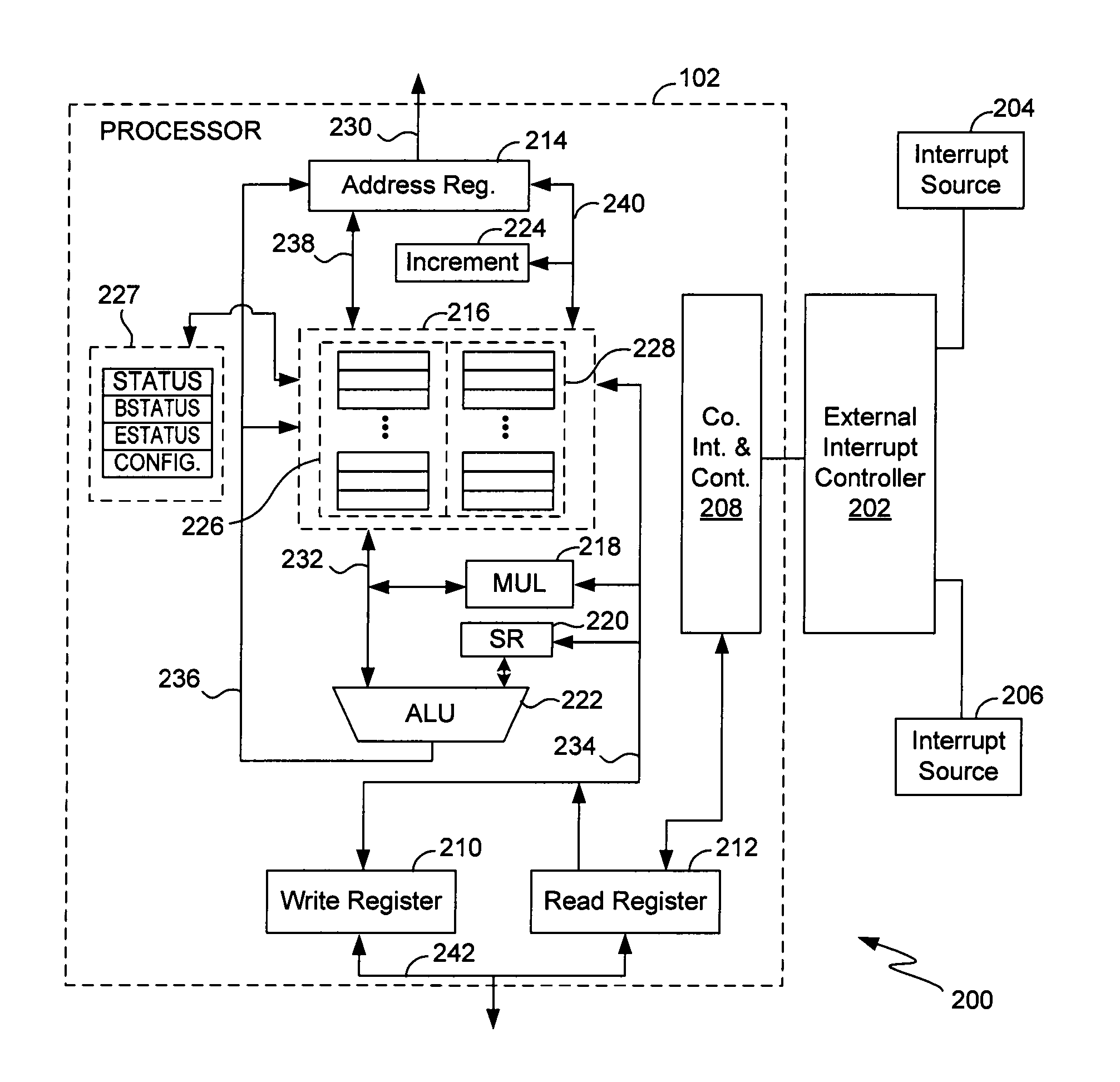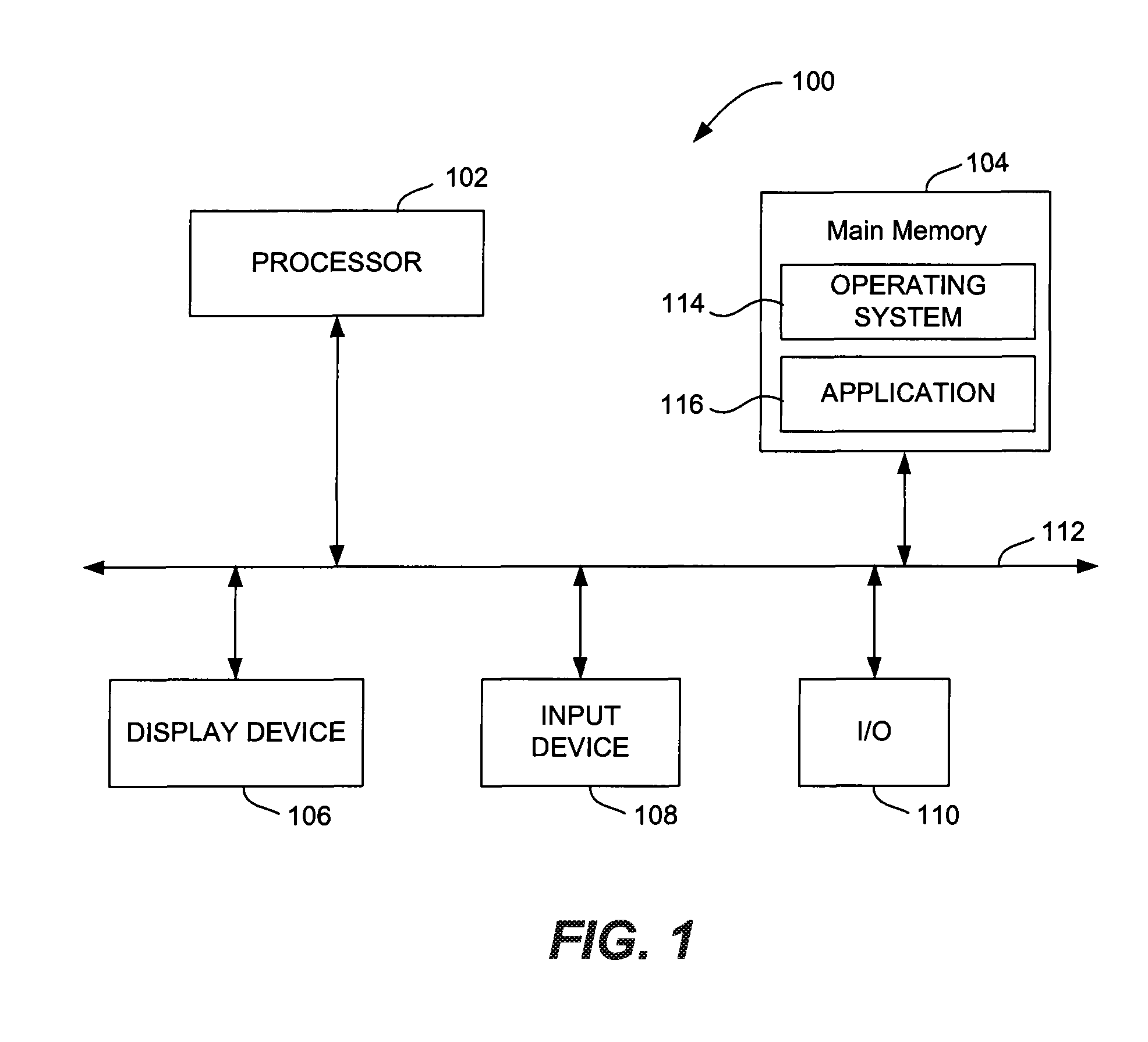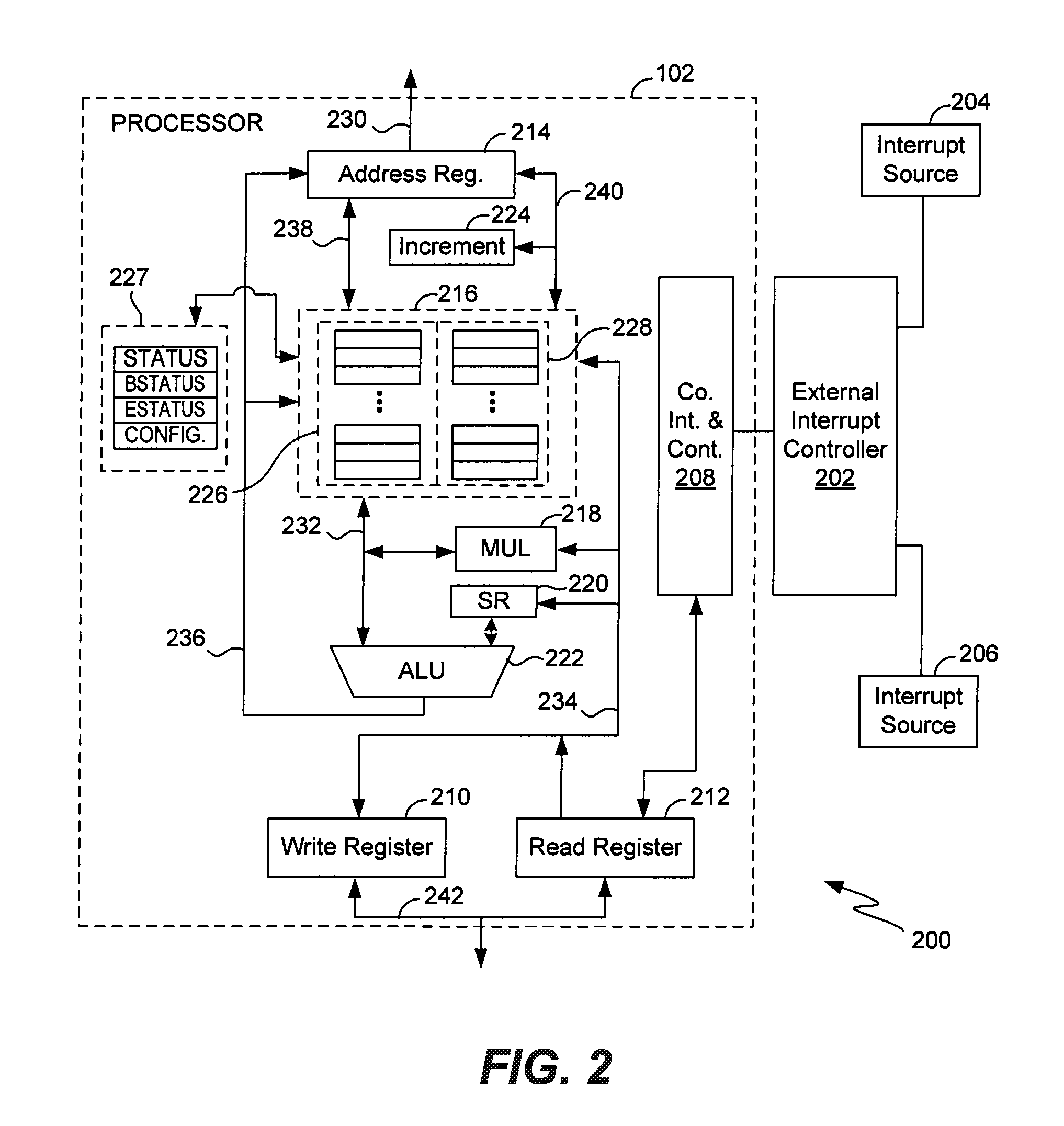Methods and systems for reducing interrupt latency by using a dedicated bit
- Summary
- Abstract
- Description
- Claims
- Application Information
AI Technical Summary
Benefits of technology
Problems solved by technology
Method used
Image
Examples
Embodiment Construction
[0015]FIG. 1 is a block diagram of an embodiment of a system 100 for reducing interrupt latency. System 100 includes a processor 102, a main memory 104, a display device 106, and input device 108, and an input / output (I / O) interface 110. Processor 102, main memory 104, display device 106, input device 108, and I / O interface 110 are connected via a bus 112, which includes a data bus, a control bus, and an address bus. Input device 108 may be a touch screen, a keyboard, a mouse, or a stylus. Examples of display device 106 include a cathode ray tube (CRT), a liquid crystal display (LCD), a plasma display, or a light emitting diode (LED) display used to display information to a user. Processor 102 is a microprocessor, a central processing unit (CPU), or a part of a microcontroller. I / O interface 110 connects processor 102 to a peripheral device, such as a modem, a network interface card (NIC), a printer, or a scanner.
[0016]Main memory 104 includes a random access memory (RAM) or a combi...
PUM
 Login to View More
Login to View More Abstract
Description
Claims
Application Information
 Login to View More
Login to View More - R&D
- Intellectual Property
- Life Sciences
- Materials
- Tech Scout
- Unparalleled Data Quality
- Higher Quality Content
- 60% Fewer Hallucinations
Browse by: Latest US Patents, China's latest patents, Technical Efficacy Thesaurus, Application Domain, Technology Topic, Popular Technical Reports.
© 2025 PatSnap. All rights reserved.Legal|Privacy policy|Modern Slavery Act Transparency Statement|Sitemap|About US| Contact US: help@patsnap.com



